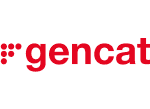Multidisciplinary Approaches for SEismic DIagnose
Micro-zonation & Damage

Description
The prevention and reduction of risks is a contribution to the 2030 agenda of the United Nations. An important goal is sustainable cities and communities. The achievement of this target is at risk if negative impact of catastrophes is not properly reduced. The overall objective of this project is to develop and to apply diagnosis tools for a better understanding, assessment and management of seismic risk. The aim is to produce knowledge, advances, and applications beyond the state-of-the-art, in two major themes:
- diagnosis and assessment of expected damage and,
- site effects in urban environments.
Although this proposal concerns earthquake disasters, the expected results go beyond seismic risk, being also relevant to increase the wellbeing, sustainability and resilience of mankind in regular conditions.
Objectives
The proposal is structured in two main objectives, and six work packages.
Objective 1: Seismic vulnerability, fragility, damage diagnosis and risk scenarios
New contributions on a recently proposed parametric model to deal with capacity curves and on the development of probabilistic damage functions, shaking table assays on a scaled framed steel building model, and a case study of a risk scenario are the work-packages (WP) linked to the first objective.
Objective 2: Study of local site effects by means of Ground Penetrating Radar (GPR)
The objective includes the correlation of traditional methods with new and more expedite ones based on the GPR response to soft soils. Thus, new lab assays on GPR-based methods to deal with soil effects and their applications to micro zonation in urban environments are the core of the fifth and sixth work packages.
Adequacy to the National Plan
This proposal matches well the objectives and priorities of the National Plan: Serving the society is the leitmotiv of this proposal. The project applies to the call focused on Society Challenges and fits well the Challenge number 5 and the sixth thematic priority of this challenge aimed at prevention and mitigation of geological risks associated with natural disasters.
Moreover, experienced research and work teams give support to this proposal. Added values of this project are:
- high expected impact of the contributions,
- explicit support of five entities involved in seismic risk preven-tion and protection,
- international dimension,
- training opportunities,
- training capacity of the teams involved and,
- the facilities of the host research center.
Detailed data management, contingency and dissemination plans have been written to optimize the benefits of the project and to minimize the harmful effects of potential threats.






Share: